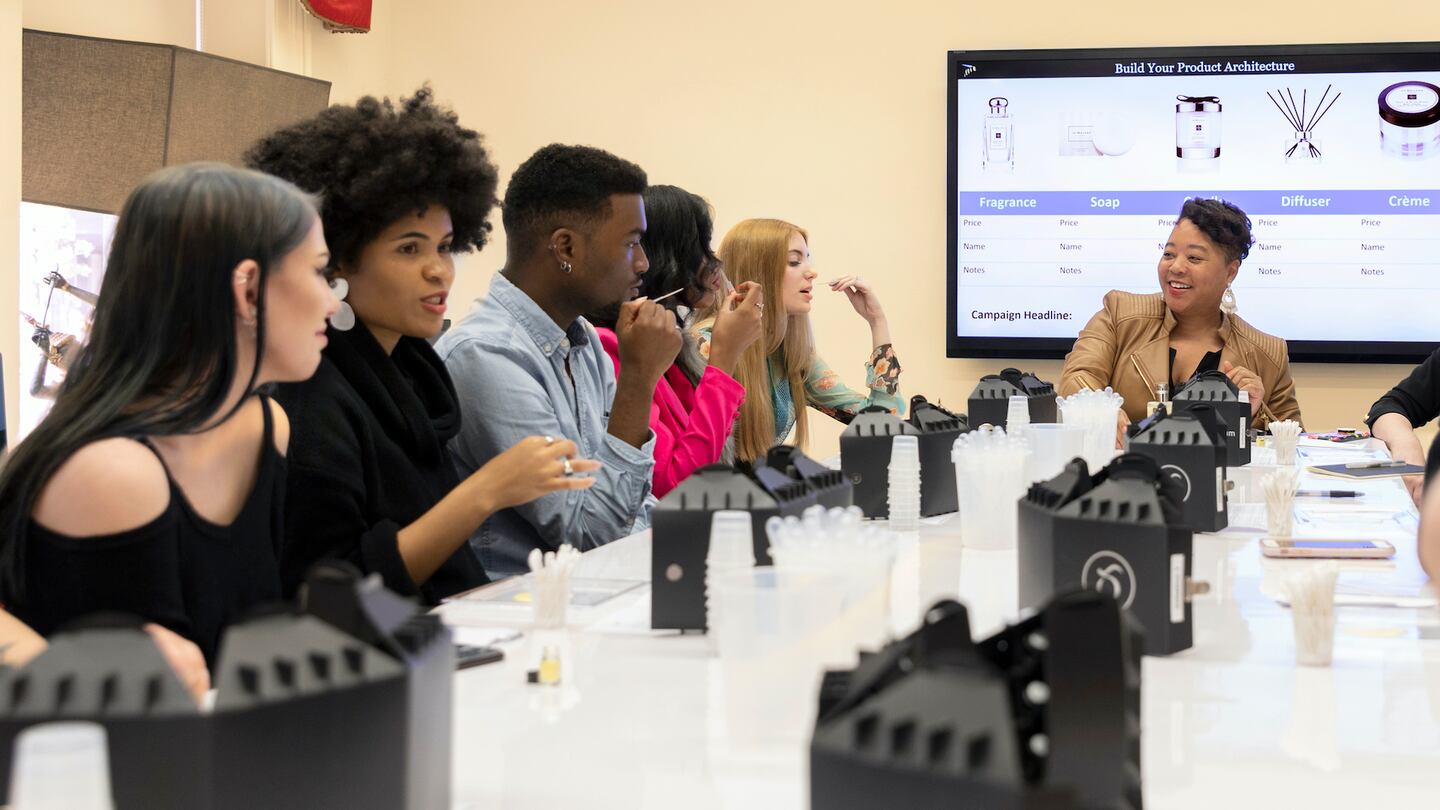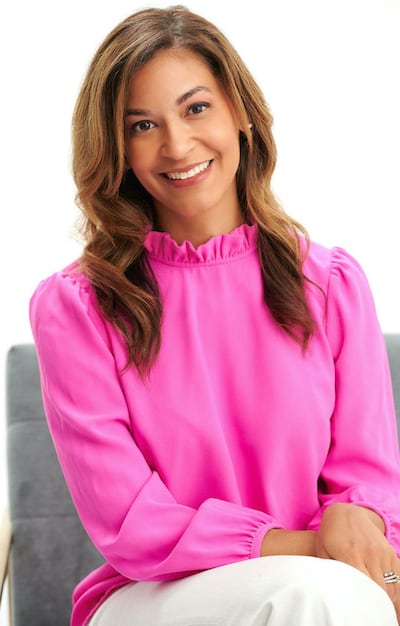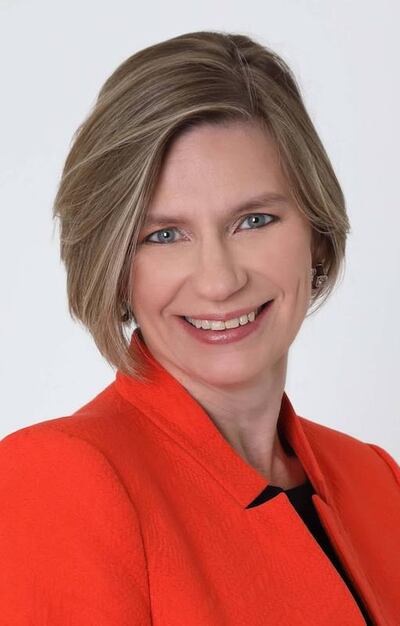
The Business of Fashion
Agenda-setting intelligence, analysis and advice for the global fashion community.

Agenda-setting intelligence, analysis and advice for the global fashion community.

Founded in 1978 and offering degree programmes previously unavailable in United States, Savannah College of Art and Design (SCAD) now enrols over 15,000 students from across the globe, offering degrees in over 40 majors and minors in more than 75 disciplines. SCAD students are able to complete their studies throughout a global network of locations in Savannah, Atlanta, and Lacoste, France, as well as an award-winning online eLearning platform.
Over its 40-year existence, SCAD has built a global reputation as a pre-eminent fashion educator. Nurturing and diversifying the industry’s young talent pool, the university is committed to celebrating and amplifying underrepresented voices, making space for important conversations in the classroom, the gallery, the runway, and the digital sphere.
SCAD students regularly engage with programming at the SCAD Museum of Art (SCAD MOA), with the twin goals of enriching education and reaching the community. SCAD FASH Museum of Fashion and Film has shown the Derrick Adams exhibition Patrick Kelly, The Journey, which inspired SCAD Founder and President Paula Wallace to create the Patrick Kelly Initiative Competition, a platform for the work of fashion students and alumni. In December, SCAD FASH debuted the Ruth E. Carter exhibition, Afrofuturism in Costume Design, marking a new opportunity for students to connect with global creative excellence.
At SCAD MOA, the André Leon Talley Gallery present diverse work in dialogue with the prestigious Walter O. Evans Center for African American Studies. Programming on Black art and culture includes the virtual series Pass the Mic, which has featured the likes of Teen Vogue’s Lindsay Peoples Wagner, SCAD alumni Daniela Yepez and Christian Cody, and Cosmopolitan’s beauty director Julee Wilson sharing insights and expertise.
To learn more about how SCAD is championing diverse identities in and outside of the classroom, as well as how the institution incorporates inclusivity into its students’ educational journey into the industry, BoF meets three university faculty members.

Dr. Audra Pittman, Vice President, SCAD Atlanta
We want to provide a connection to people in the industry that our students can identify and build relationships with — providing opportunities for them to see the diversity in the field.
Why is it important for the fashion industry to improve the diversity of its talent pool?
There are so many people who reflect what fashion is today, and students want to design for all body types and genders, as well as integrating sustainability. The fashion world is expanding, and we need to look at how we are preparing those professionals to adapt with the times.
How have you seen SCAD’s efforts in this space evolve?
Our Office of Inclusion’s function is to raise awareness of issues that relate to diversity and inclusion in a safe environment. It provides workshops and training for the staff, faculty, and students. We’re also addressing diversity in our faculty. Nearly 30 percent of our students at SCAD are international and we want to make sure our faculty reflects that.
How have you evolved the curriculum to cater to the industry today?
We work with academic services to make sure teaching materials and courses embrace multiple cultures. One example is our course Contemporary Issues in Fashion Merchandising, which discusses ethics, leadership and how the industry is evolving to eliminate bias.
SCAD works on a quarter system, with courses that are 10 weeks long. We pride ourselves on being agile and we regularly update courses to ensure they are relevant. If we see that there’s a demand for a particular topic that is not on the curriculum, we have a Special Topics course that allows us to explore that subject. If enrolment in that course fills up for two quarters, we implement it into the curriculum.
How do you prepare students for the realities of working in the fashion industry?
It’s about providing access, so students know who the movers and shakers are, how decisions are made, and are able to secure internships. SCAD invites industry leaders to meet with and mentor students. We have an alumni mentor programme with professionals like designer and SCAD alumnus Christopher John Rodgers, who can speak to his experience in industry and his time as a SCAD student.
The fashion world is expanding, and we need to look at how we are preparing those professionals to adapt with the times.
SCADpro — our collaborative innovation studio connecting businesses and brands with students and faculty — also teaches students the realities of working with an industry partner. A student may have a great idea, but the company may not be ready to accept it. You have to create alternative solutions.
We also provide comprehensive career and alumni services, achieving a 99 percent employment success rate after graduation in 2019. Last year, SCAD talked to 40,000+ alumni to support them post-graduation — we want to make sure they are maintaining jobs in their chosen field. We also developed a series called Catalyst, which invites professionals to talk about diversity issues in hiring, equity, and diversifying leadership.
How do SCAD’s wider initiatives promote diversity and inclusion?
It’s not just about the classroom — it’s also about what happens outside. With the Derrick Adams: Patrick Kelly, The Journey exhibition at SCAD FASH, we went a step further and set up the Patrick Kelly Initiative Competition, platforming the work of students and alumni inspired by the collection.
I also looked forward to [costume designer] Ruth Carter’s Afrofuturism exhibition in December. We want to provide a connection to people in the industry who our students can identify and build relationships with. It’s essential that we provide opportunities for our students to see the diversity in the field.
Bee Well is an initiative that provides mental health services and activities to support students outside of the classroom. We understand the importance of pushing someone’s creative ability and work ethic, but it is all about maintaining balance.

Meloney Moore, Associate Chair of Business of Beauty and Fragrance
Every class is devised to build out students’ capabilities in communication, leadership, and technical skills, with inclusion and diversity incorporated into the fabric of the programme.
Why is it important for the fashion industry to improve the diversity of its talent pool?
If a business wants to be successful in this industry, they have to speak to that consumer in an authentic way. You need to have people who can reflect and understand this mindset. We have to have more diversity of thought. Bringing in that diversity is just going to mean success for the industry. Minorities spend more money on beauty and fashion combined — African Americans spend 33 percent more on hair than any other consumer demographic.
How have you evolved the curriculum to cater to the industry today?
I worked at Estée Lauder for seven and a half years, where I initially focused on Asian skincare. Asia is the largest region for beauty today and we integrate that into our curriculum, studying WeChat, Alibaba and Tmall. Before I joined, L’Oréal approached SCAD to develop a curriculum for junior talent, to foster the desirable skills for working in the industry today. From there, we built out the curriculum, from history and marketing to product and package design, sustainability, and global markets.
One of the biggest challenges in developing the curriculum is the resources. The materials are all very Western focused, so I have done research on all the major continents, from China to Brazil to Russia, and I am integrating that into the classroom.
Educating students to identify microaggressions and exclusionary tactics in marketing is essential.
The industry is moving more towards tech and customisation. We are already seeing automated foundation matching and 3D printed lipsticks, so the tech piece is also something we focus on.
How do you prepare students for the realities of working in the beauty industry?
Every class is devised to build out students’ capabilities in communication, leadership and technical skills, with inclusion and diversity incorporated into the fabric of the programme. For example, one project has students build an entire brand, from packaging to formula, from the ground up. Diversity and inclusion constantly come up, from melanin-specific skincare to gender-neutral makeup and leveraging those specifics on social media.
While working with my students, we take a global perspective in everything we do. Educating students to identify microaggressions and exclusionary tactics in marketing is essential as it develops empathy towards understanding consumer insights.
How do SCAD’s wider initiatives promote diversity and inclusion?
We have a great opportunity to lead industry conversations with Pass the Mic, where Black and Latinx executives come in and speak to their experience. It is enlightening for our students and demonstrates that there are many different ways to educate.
Outside the classroom, we also have frank conversations with industry partners. We ask, “What plans do you have after you hire our students to integrate them into your organisation and welcome their creativity?” Our support of students doesn’t stop when they graduate.

Doris Treptow, Fashion Professor
Our fashion students are not tied up by current trends — they’re engaged in social movements and advocating for justice.
Why is it important for the fashion industry to improve the diversity of its talent pool?
Students from the same background tend to produce work that is predictable. When we work on projects at SCAD, groups of diverse students with different voices generally produce work that is far more original and creative.
The same applies to the fashion industry. If everybody is the same, the work that’s going to come out is only going to focus on the demographic that group represents. It makes business sense to have a diverse team if you are trying to reach a diverse market.
How have you evolved the curriculum to cater to the industry today?
A lot of the textbooks on the History of Fashion course have a Eurocentric view, so we also look at African or Asian influences in fashion, examining history that is more representative and diverse.
The curriculum is solutions-oriented. For example, in our Trends and Forecasting course, we look at supply chain issues, equitable hiring practices and fair wage distribution. Students conduct a report on consumer behaviour, which last year included projects on take-back programmes and circularity. Seventy percent of the work is focused on solutions.
How do you prepare students for the realities of working in the fashion industry?
Our students are mastering digital fabrication, so they are not limited to being in a studio. We started teaching [3D design software] CLO at the beginning of the pandemic, so our students graduating in 2020 had opportunities to master the software and prepare for an industry in which product development is going digital. Many companies also see the advantage of students learning how to operate in a virtual environment.
When students see diversity in the faculty, they recognise opportunity.
SCAD has also implemented several programmes since the pandemic, creating events where students can interact digitally with professionals. We have a new series called Guests and Gusto, providing conversations with leading cultural voices like the artist André 3000, designer Prabal Gurung, YouTube’s Head of Fashion & Beauty Derek Blasberg, and stylist Jason Bolden. Students have a chance to talk to the speakers and have their questions answered. Those connections can lead to internships or entry-level jobs.
How do SCAD’s wider initiatives promote diversity and inclusivity?
SCAD is great at cross-disciplinary collaborations. We nurture new students to collaborate across different majors or expertise. For example, fashion students are creating gorgeous portfolios in collaboration with students studying marketing, advertising and photography. The end result is a great portfolio for all involved, and those relationships last after graduation.
When students see diversity in the faculty, they recognise opportunity. I’m from Brazil and I feel part of this diverse pool of talent at SCAD. It’s not a bubble and students see representation in that. It leads them to think positively about the future. If SCAD can do this, other businesses can too.
What quality stands SCAD students apart?
A lot of these students champion a different sensibility and interests outside of the mainstream. When they come here, they blossom, and they bring with them their own voices and stories. You can see that especially in their senior collections.
Our fashion students are not tied up by current trends — they’re engaged in social movements and advocating for justice. Our 2019 salutatorian, Briana Hunter, created a poignant and powerful collection inspired by Black Lives Matter in 2018. We have international students who spend four years celebrating their heritage with their collections. I have been at SCAD for 16 years and every quarter is a new adventure. It never gets old.
This is a sponsored feature paid for by SCAD as part of a BoF partnership.
From analysis of the global fashion and beauty industries to career and personal advice, BoF’s founder and CEO, Imran Amed, will be answering your questions on Sunday, February 18, 2024 during London Fashion Week.
The State of Fashion 2024 breaks down the 10 themes that will define the industry in the year ahead.
Imran Amed reviews the most important fashion stories of the year and shares his predictions on what this means for the industry in 2024.
After three days of inspiring talks, guests closed out BoF’s gathering for big thinkers with a black tie gala followed by an intimate performance from Rita Ora — guest starring Billy Porter.